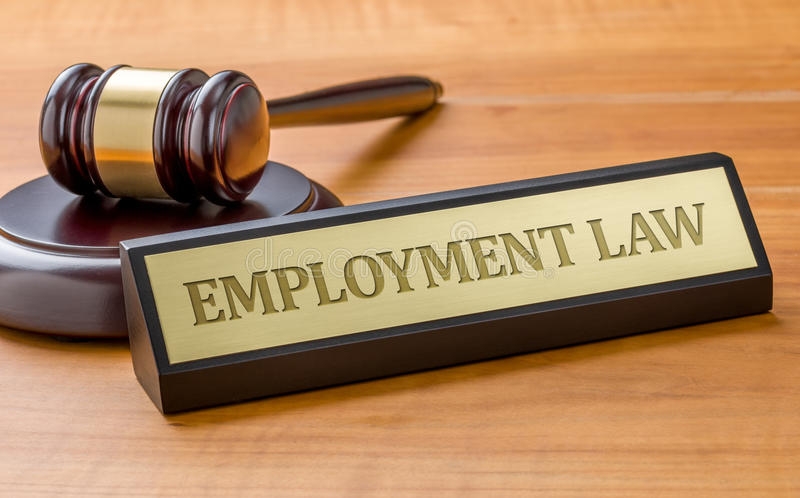 New guidance on Age Discrimination has been published which contains the best practice guidelines on preventing age discrimination in the workplace, and the legalities around different types of age discrimination.
New guidance on Age Discrimination has been published which contains the best practice guidelines on preventing age discrimination in the workplace, and the legalities around different types of age discrimination.
Age is one of the protected characteristics in discrimination legislation. It has been illegal to discriminate because of a person’s age since 2006. Despite this, a recent Government report and age related charities maintain older workers are not retained in the workplace, their skills are being wasted, and they are still being discriminated against. It’s an ongoing concern given the aging population.
An age discrimination claim can be made from the recruitment stage, there is no employment service required and compensation is unlimited, so it is well worth being aware of the new guidance on Age Discrimination and ways in which an employer could be discriminating.
It is not only in obvious ways that you could be discriminating. With the abolition of the retirement age nearly 8 years ago, most people know that turning 65 no longer means someone is going to retire, and that this can no longer be forced. However you have to also consider that anyone of any age can bring an age discrimination claim, not just those at the older and younger ends of the spectrum.
Age related assumptions are common, such as:
- It is a waste of time to train older people
- They will soon retire and are set in their ways
- Young people aren’t committed
We are probably all guilty of some stereo typing relating to age. A couple of bad experiences with a certain age group may have led us to form sweeping generalisations about those age groups. However these views can inadvertently lead to discrimination.
Direct and Indirect Discrimination – What’s the difference?
As well as direct discrimination, which includes discrimination by association (relating to the age of someone that the employee/job applicant is associated with), or perception (relating to the age the employee/job applicant is perceived to be); it is also unlawful to discriminate indirectly.
Direct Age Discrimination
In this type of claim, the individual has to show less favourable treatment than a (real or hypothetical) comparator whose circumstances are not materially different to theirs - comparison must be with someone in a different age group. However, a protected age group could be the ‘over-forties’ or it could mean people of a specific age, such as 20-year-olds. There is a potentially wide scope to consider.
Indirect Age Discrimination
This will arise where a provision, criterion or practice is applied equally to a group of employees or job applicants, but disadvantages employees or job applicants of a particular age group. An example of this is shown in the case of
Rainbow v Milton Keynes Council. A tribunal found that an advert stating that a vacancy ‘would suit candidates in the first five years of their career’ was indirect age discrimination. Someone in Ms Rainbow's age group of over 60 was likely to have more than five years' teaching experience and would therefore be at a disadvantage.

In addition, an employer needs to be aware of complaints that can be brought under age related harassment (including the fact that a complaint can be made of harassment by someone even if the behaviour being complained about was not directed at them). Also victimisation, where an employee is put at a detriment because they have made or intend to make an age discrimination complaint under the
Equality Act 2010, or because they have taken action or intend to take action in connection with the Act.
An act of discrimination, harassment or victimisation can be carried out by the employer itself; by its employees (whether or not the act is done with the employer's knowledge or approval) or by an agent of the employer with the express or implied authority of the employer. To avoid liability for acts carried out by an employee or agent, an employer would have to show that they had taken all reasonable steps to prevent the conduct from taking place. This would include, but would not be enough in itself, to have a good anti – discrimination company policy.
An ACAS guide covers the potential pitfalls in recruiting, training, performance management and dismissal in terms of the risks of age discrimination, emphasising that it isn’t only at the start and end of the employment cycle the risks may arise.
Practical guidance on age discrimination in the workplace
An employer should ensure they employ good practice to help avoid discrimination in the workplace, some simple guidance on age discrimination includes:
- Ensure that all managers and employees are aware of the discrimination laws and how to avoid falling foul of them.
- Ensure that any anti-discrimination policies are properly implemented within the organisation, preferably with associated training or examples of what to watch for.
- Policies, practices and benefits should be reviewed to ensure they are not directly or indirectly discriminatory in any way.
- Recruitment selection criteria should be designed to be fair to all based on objective criteria and focusing on skills and abilities. Interview questions should be focused on this too and in no way discriminatory. Adverts should be carefully worded.
It is not always easy for an employer to identify whether they are acting in a discriminatory way or have a policy or practice that could be construed as discriminatory. It is not always obvious and intentional. Contact Wirehouse and let our experts provide you with guidance on Age Discrimination and any other HR issues you may have.
 New guidance on Age Discrimination has been published which contains the best practice guidelines on preventing age discrimination in the workplace, and the legalities around different types of age discrimination.
Age is one of the protected characteristics in discrimination legislation. It has been illegal to discriminate because of a person’s age since 2006. Despite this, a recent Government report and age related charities maintain older workers are not retained in the workplace, their skills are being wasted, and they are still being discriminated against. It’s an ongoing concern given the aging population.
An age discrimination claim can be made from the recruitment stage, there is no employment service required and compensation is unlimited, so it is well worth being aware of the new guidance on Age Discrimination and ways in which an employer could be discriminating.
It is not only in obvious ways that you could be discriminating. With the abolition of the retirement age nearly 8 years ago, most people know that turning 65 no longer means someone is going to retire, and that this can no longer be forced. However you have to also consider that anyone of any age can bring an age discrimination claim, not just those at the older and younger ends of the spectrum.
Age related assumptions are common, such as:
New guidance on Age Discrimination has been published which contains the best practice guidelines on preventing age discrimination in the workplace, and the legalities around different types of age discrimination.
Age is one of the protected characteristics in discrimination legislation. It has been illegal to discriminate because of a person’s age since 2006. Despite this, a recent Government report and age related charities maintain older workers are not retained in the workplace, their skills are being wasted, and they are still being discriminated against. It’s an ongoing concern given the aging population.
An age discrimination claim can be made from the recruitment stage, there is no employment service required and compensation is unlimited, so it is well worth being aware of the new guidance on Age Discrimination and ways in which an employer could be discriminating.
It is not only in obvious ways that you could be discriminating. With the abolition of the retirement age nearly 8 years ago, most people know that turning 65 no longer means someone is going to retire, and that this can no longer be forced. However you have to also consider that anyone of any age can bring an age discrimination claim, not just those at the older and younger ends of the spectrum.
Age related assumptions are common, such as:
 In addition, an employer needs to be aware of complaints that can be brought under age related harassment (including the fact that a complaint can be made of harassment by someone even if the behaviour being complained about was not directed at them). Also victimisation, where an employee is put at a detriment because they have made or intend to make an age discrimination complaint under the Equality Act 2010, or because they have taken action or intend to take action in connection with the Act.
An act of discrimination, harassment or victimisation can be carried out by the employer itself; by its employees (whether or not the act is done with the employer's knowledge or approval) or by an agent of the employer with the express or implied authority of the employer. To avoid liability for acts carried out by an employee or agent, an employer would have to show that they had taken all reasonable steps to prevent the conduct from taking place. This would include, but would not be enough in itself, to have a good anti – discrimination company policy.
An ACAS guide covers the potential pitfalls in recruiting, training, performance management and dismissal in terms of the risks of age discrimination, emphasising that it isn’t only at the start and end of the employment cycle the risks may arise.
In addition, an employer needs to be aware of complaints that can be brought under age related harassment (including the fact that a complaint can be made of harassment by someone even if the behaviour being complained about was not directed at them). Also victimisation, where an employee is put at a detriment because they have made or intend to make an age discrimination complaint under the Equality Act 2010, or because they have taken action or intend to take action in connection with the Act.
An act of discrimination, harassment or victimisation can be carried out by the employer itself; by its employees (whether or not the act is done with the employer's knowledge or approval) or by an agent of the employer with the express or implied authority of the employer. To avoid liability for acts carried out by an employee or agent, an employer would have to show that they had taken all reasonable steps to prevent the conduct from taking place. This would include, but would not be enough in itself, to have a good anti – discrimination company policy.
An ACAS guide covers the potential pitfalls in recruiting, training, performance management and dismissal in terms of the risks of age discrimination, emphasising that it isn’t only at the start and end of the employment cycle the risks may arise.



